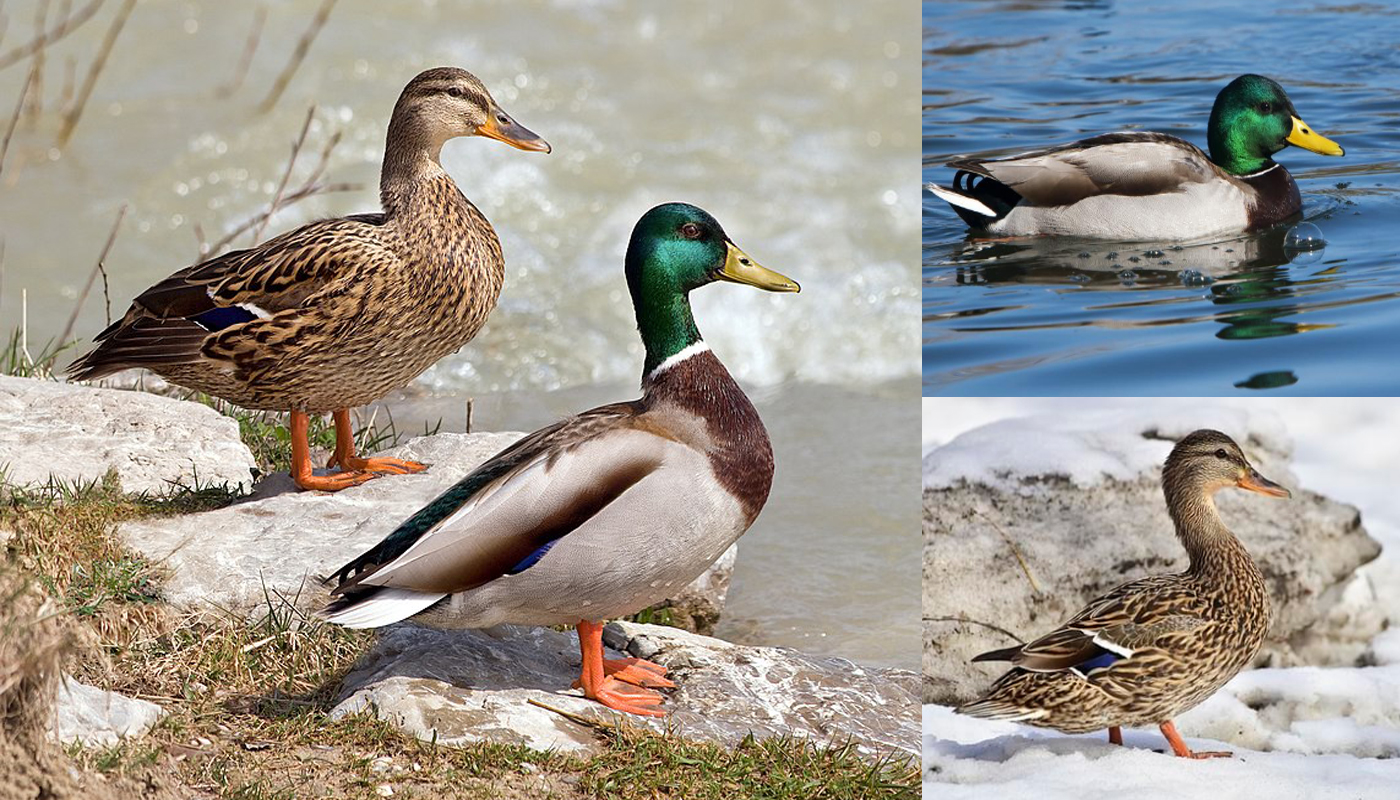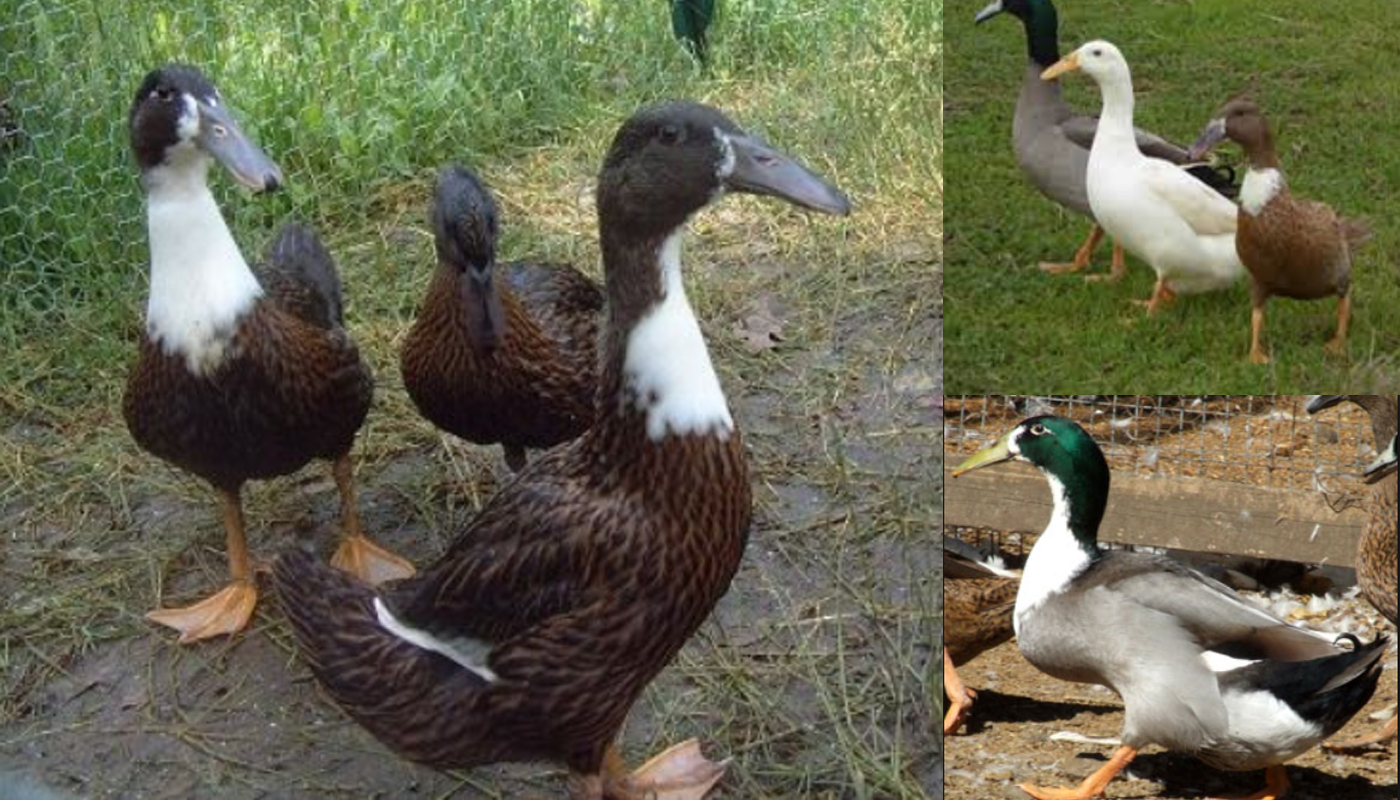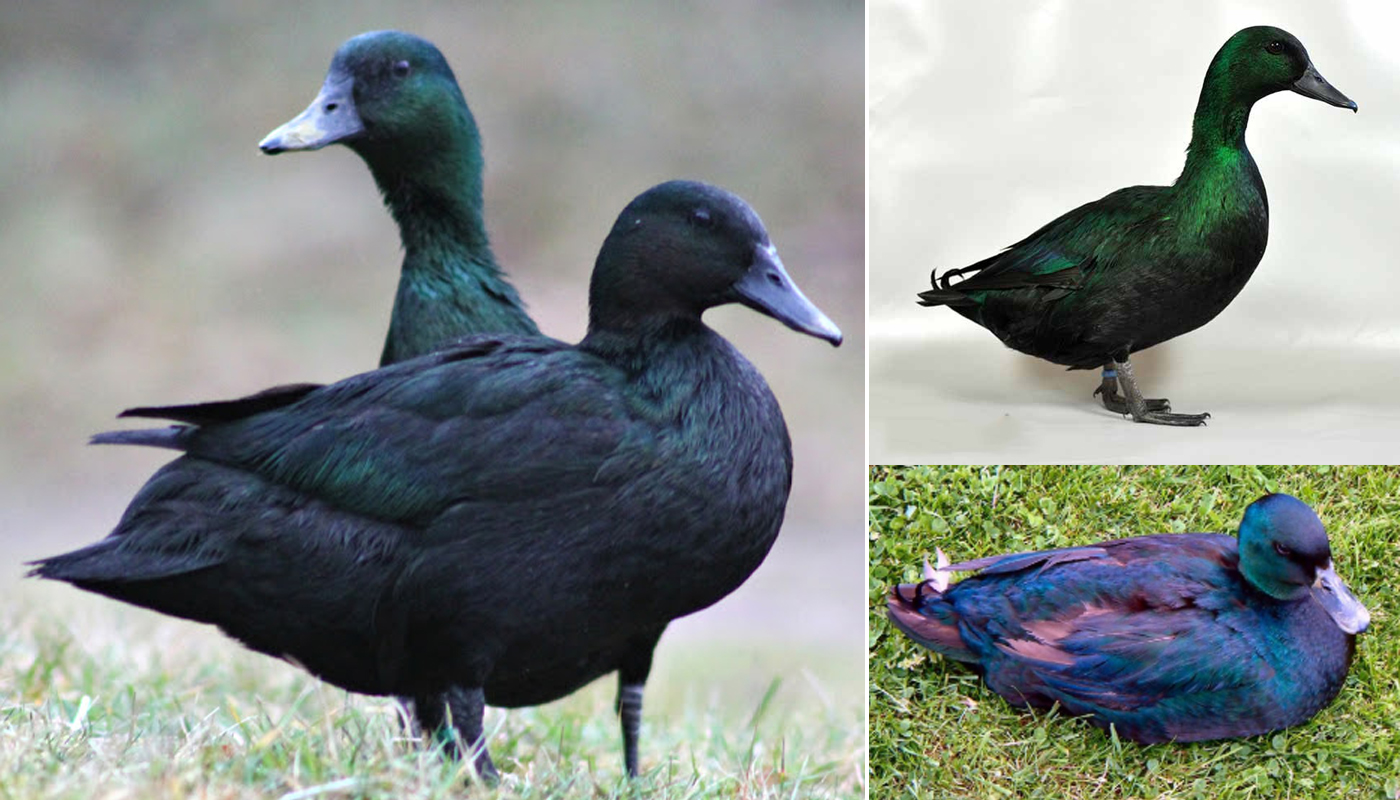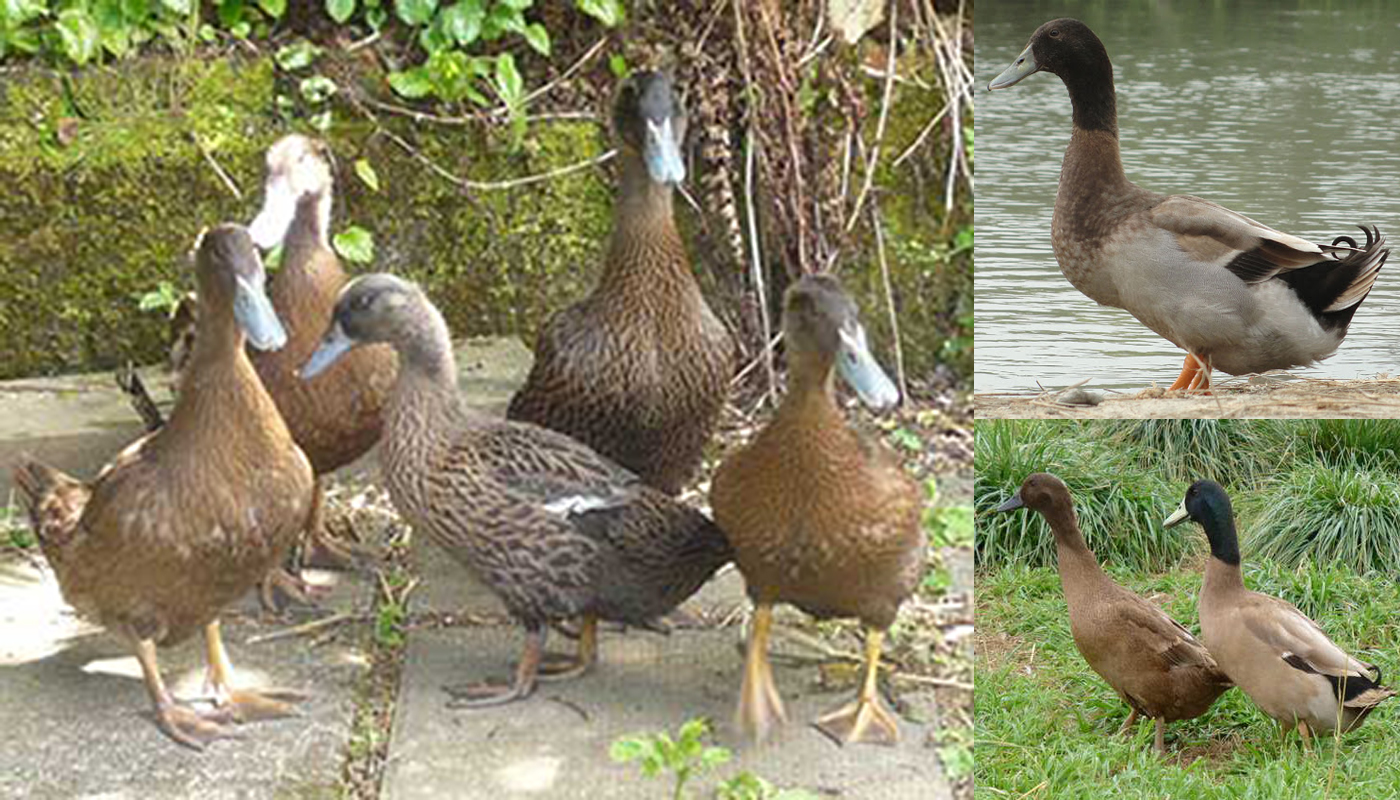
The Rouen has been around for generations. They have been bred by poultry enthusiasts all over the world as the ultimate show duck since its inception into the APA in 1874.
There are two distinct types of Rouen ducks one is the industrial breed that is used for eggs and meat. Then there is the breed that they call the non-industrial breed of Rouen which is a lot heavier and is on the American Conservation list.
These calm, graceful birds have a majestic air about them and are a great starter duck. They also make good pets especially for those with a family. As they are quite a heavy duck they cannot fly very well, in fact, they usually do not even try to. So, there is no chance of them trying to fly off for the winter or to visit the neighbors. For people who are looking for a show bird, you cannot go wrong with the Rouen.
GENERAL INFORMATION |
|
|---|---|
| Country of Origin: | France |
| American Poultry Association: | Yes Recognized by the American Poultry Association |
| Duck Category: | Heavy Breed |
| Duck Class: | French |
| Colors: | Gray, Date of acceptance: 1874 |
| Other names known by | Rhone or Rohan |
| Good starter duck? | Yes, the make an excellent starter duck |
| You may Also Like: | TOP 10 GOOD STARTER DUCK BREEDS |
| Bantam Variety Available? | No |
| You may Also Like: | 10 BEST BANTAM DUCK BREEDS |
APPEARANCE / IDENTIFICATION
| DUCK BITS | DESCRIPTION | COLOR | |||||||
|---|---|---|---|---|---|---|---|---|---|
| EYES⇒ | Black | ||||||||
| BILL⇒ | Medium | F – Brown M – Yellow |
|||||||
| Straight bill with a*Black bean tipped at the end of the bill. | |||||||||
| CRESTED? | No | ||||||||
| EAR LOBES⇒ | Normal | Same as Feathers | |||||||
| Small, feather-covered holes behind the eyes | |||||||||
| LEGS⇒ | Closer together than other breeds | Yellow/Orange | |||||||
| Their legs are quite balanced in proportion to their bodies. This gives them almost a perfect boat shape similar that old-fashioned schooner shape. | |||||||||
| FEET⇒ | Small | Yellow/Orange | |||||||
| Thin membrane webbed feet with three toes. | |||||||||
| WINGS⇒ | Average size | Gray with blue stripe | |||||||
| Do not fly very well as they are very heavy. Most of the time they do not even try. | |||||||||
| FEATHERS⇒ | ***Speculum | Gray | |||||||
| The feather coloring and patterns are both gray but are slightly different between the female and drake. | |||||||||
| SKIN COLOR⇒ | White | ||||||||
| AVERAGE WEIGHT⇒ |
|
||||||||
| *Bean: This is also called the nail. It is a small round bump found at the end of the duck’s bill. It is used for defence and to catch insects. It is almost like a fingernail and is damaged can grow back. It can also get overgrown much like fingernails if they do not have something to grind it down on. | |||||||||
| ** Note: This is an average weight for the male duck and not a guaranteed weight | |||||||||
| *** Speculum: A patch of distinctly colored secondary wing feathers of a bird. For instance, on the Rouen, it is an “iridescent purple-blue with white edges”. | |||||||||
USE/PURPOSE |
||||||||||||||||||||||||||||||||||||
|---|---|---|---|---|---|---|---|---|---|---|---|---|---|---|---|---|---|---|---|---|---|---|---|---|---|---|---|---|---|---|---|---|---|---|---|---|
Females/Hens⇒ |
Dual Purpose mainly meat and eggs. Prized show bird + Breeding. They have a graceful stance with their legs being more centered and back. The Females feathers are mainly brown with black penciling patterns on them. Her wings have a diagonal blue pattern on them. Her legs and feet vary between a dark orange to brown the same as her bill. Her head coloring is the same color as the rest of her feathers with a patch over her eyes a bit lighter with a darker stripe through it.
|
|||||||||||||||||||||||||||||||||||
Males/Drakes⇒ |
Meat, exhibition + Breeding. The males are quite hefty lads that have a calm regal air about them. The drake has a deep level Dark Gray to light gray keel. Its head is a beautiful Jade green with black around the eyes and a ring of black around the neck. He has a white ring around his neck. Where the female is more of a dark brown/gray he is grayer his wings also have a diagonal pattern across them. His bill is a light yellow whilst his legs and feet are more bright orange.
|
TEMPERAMENT |
|
|---|---|
| “They are very calm and gently ducks. They are not overly loud and make really good back garden duck flock additions that will lend a graceful regal air to the duck flock.” | |
| Good with Kids? | Yes, they are good around supervised kids |
| You may Also Like: | 10 BEST DUCK BREEDS TO KEEP AS FAMILY PET |
| Flyers? | They are a bit on the heavy side so make poor fliers and hardly even attempt to try fly. |
| Noisy Birds? | The drakes are not very noisy but if the females are upset they can be quite vocal in their upset. |
| Interact with other ducks? | They will get along with most any other duck breed. |
| Best duck breeds to mix them with: | Most domestic duck breeds tend to mix well. You may want to separate them if you want to breed them though as domestic drakes will mate with any duck. |
| Other animals? | Most ducks are not too fussed with other animals. I would watch dogs and cats around them though. |
IDEAL ENVIRONMENT |
|
|---|---|
| “They do like to dabble but also tend to stick close to home. So a nice sized safe and cozy duck house to keep them snug at night. Whilst a decent sized duck pool to suit their body weight for them to dip into will work well for this breed.” | |
| Ideal Garden Size? | They are adaptive to most environments |
| Can be Confined? | They will adapt to confinement, but the females can get very vocal |
| Free-Range | They won’t stray too far from their home and or water pool |
| Penned Free-Ranging? | They do not mind a closed penned off area to waddle and paddle in, they may even feel more secure. This breed likes being as near to their nest as possible. |
| Foragers | They do love to dig through the garden for grubs |
| Endures heat well | Most ducks will take the heat as long as they have a cool clean dipping pond |
| Endures cold well | They do not mind the cold as long as they have some warm shelter to snuggled down in |
| Special Requirements? | Their eggs have to be tended to in case they get accidentally broken if you are wanting to have duck eggs or breed the Rouen. |
| Ideal Duck House: | Depending on the size of the flock a normal duck house with bedding and security from predators. |
| Ideal Duck Pond: | A medium-sized plastic kiddies pool or small shallow pond situated near their house/nesting boxes |
| Flock/Paddling Size: | Their needs to be at least two of them. |
| You may Also Like: | 22 Best DOMESTIC DUCK BREEDS |
GOOD TO KNOW |
|
|---|---|
| “Both the industrial and standard Rouen make for an excellent starter duck, will compliment any duck flock and are exceptional show birds. Their meat is really prized but you may have to wait up to a year to cull the duck.” | |
| Special Care/Attention Requirements? | They do not need much special attention or care. |
| Known Predators: | Check with animal control in your area for known predators |
| Conservations Status: | Not Listed For more information on poultry, conservation status, check the American Livestock Conservancy Website |
| Breeders Clubs: | It is best to check with the American Poultry Association for various clubs and or organizations. |
| Where to buy them: | Cackle Hatchery, Metzer Farms, Purely Poultry usually have stock of them. You must check if they are the industrial or standard breed when buying them., the APA or check with the American Livestock Conservancy |
| Other: | If you do not want to risk having your ducks shipped check with your local poultry farms for advice on your nearest supplier. |
HISTORY
The Rouen duck breed has its origins in France. Poultry historians believe near a town the French town of Rouen.
They were first known as Rhone which is an area in Southwest France. They were also called Rohan after a Catholic Cardinal before finally being called Rouen in north-central France. Rouen is now known as Holderread.
The Rouen were first taken to England in the early 1800’s where breeding enthusiasts set out to improve on the duck breed. Breeders in England doubled the duck’s average size and managed to improve on its feather coloring. The Rouen was imported to the United States in 1850 by a Mr D. W. Lincoln who at the time resided in Worcester. The ducks beautiful unique color set, size and calm gentle nature soon made it a popular general-purpose breed for farmers in America.
The Rouen was accepted into the Standard of Perfection by the American Poultry Association in 1874. There is only one standard color variety of the Rouen and that is the Gray.
Not only did the Rouen become popular as a general utility breed but poultry show breeders seemed to enjoy the challenge of breeding these graceful beauties.
The Rouen comes in two types the production Rouen which is a bit smaller and sleeker than the standard Rouen. The standard Rouen can reach up to 9 – 10 pounds and are quite clumsy then hen tends to accidentally break her eggs.
Even though they are not the best of layers they still can give up to 125 large white eggs a year. But they are most prized for their unsurpassed gourmet quality meat. The downside of using Rouen’s for their meat production is that the birds take a long time to mature. Commercial duck farmers tend not to breed them for their meat as they can take between 6 to 8 months to reach an age where they can be culled. They are, very popular, for the smaller production and homesteads.
Breeding Rouen ducks are quite a challenge too because in the standard Rouen’s the drakes tend to have overly developed keels that are known to cause breeding problems. It is advised to keep some of the production Rouen drakes for breeding purposes.
Health
As with most of the heavy breed of ducks, I would check their feet regularly as they larger breeds are more prone to foot disease such as Bumblefoot.
- Ducks need water to ensure they do not get “wet feather” disease. This is where the preening gland dries out. Water also stops them from getting pests such as mites, fleas, ticks, lice, etc.
- Well, fed ducks should hardly have any health issues.
- Any birds kept in a flock need to be dewormed. Although ducks are not as prone as other poultry they should still have a de-worming regime. Speak to a local vet or poultry experts for advice. Our article on Healthy Ducks has some great tips and advice on de-worming ducks.
 Duclair Duck Breed – Everything You Need to Know
Duclair Duck Breed – Everything You Need to Know The Best Wild Ducks for Meat Production
The Best Wild Ducks for Meat Production Aylesbury Duck Breed – Everything You Need to Know
Aylesbury Duck Breed – Everything You Need to Know Pomeranian Duck Breed – Everything You Need to Know
Pomeranian Duck Breed – Everything You Need to Know American Wigeon – Wild Dabbling Duck Breed
American Wigeon – Wild Dabbling Duck Breed Mallard Duck Breed – Everything You Need to Know
Mallard Duck Breed – Everything You Need to Know Blue-Winged Teal – Wild Dabbling Duck Breed
Blue-Winged Teal – Wild Dabbling Duck Breed Hookbill Duck Breed – Everything You Need to Know
Hookbill Duck Breed – Everything You Need to Know East Indie Duck Breed – Everything You Need to Know
East Indie Duck Breed – Everything You Need to Know Welsh Harlequin Duck Breed – Everything You Need to Know
Welsh Harlequin Duck Breed – Everything You Need to Know Khaki Campbell Duck Breed – Everything You Need to Know
Khaki Campbell Duck Breed – Everything You Need to Know Best Domestic Duck Breeds to Keep as Family Pet
Best Domestic Duck Breeds to Keep as Family Pet